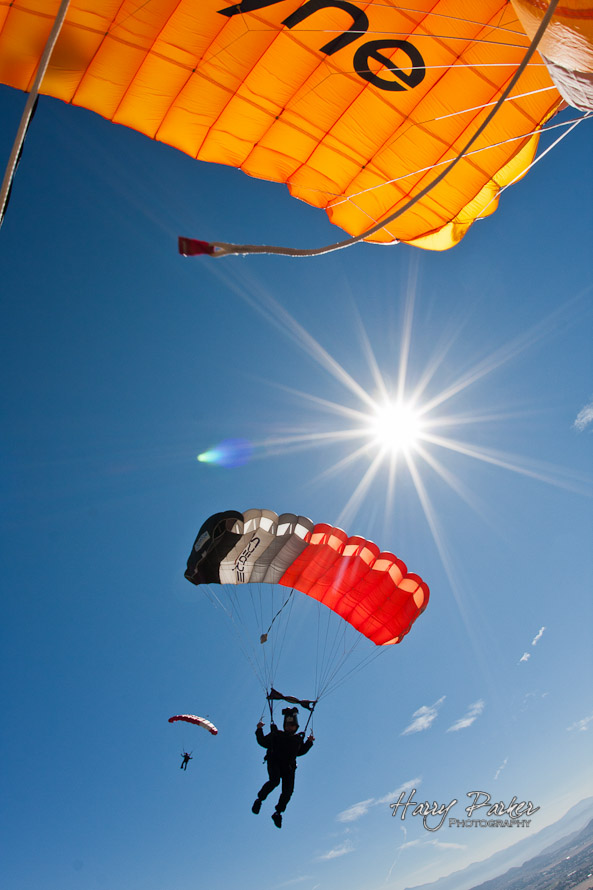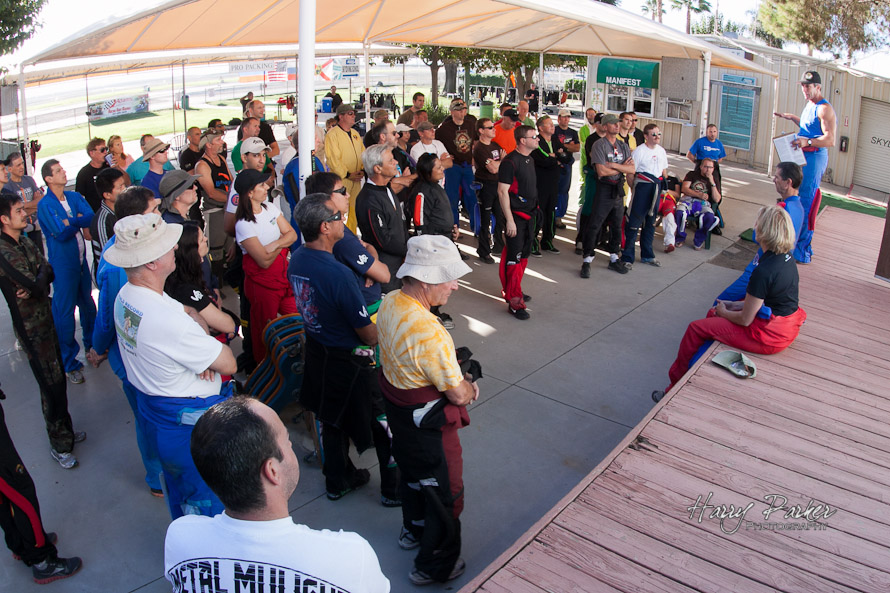 Day two of the P3 Big Way Camp at Skydive Perris Valley sees more marked improvement of camp participants as changes are made. Jumpers get new exit, slot and plane assignments on the same formation as yesterday. I get left trial plane and master the new debrief system.
Day two of the P3 Big Way Camp at Skydive Perris Valley sees more marked improvement of camp participants as changes are made. Jumpers get new exit, slot and plane assignments on the same formation as yesterday. I get left trial plane and master the new debrief system.
Left trail plane is another exciting position for the cameraman. Due to the fact of a left-sided door on the Otter we can’t see the lead plane and rely on several points of communication for our groups climb out. This is the station that if a green or go from jumpers comes, I am out the door. Last thing I want is to be blamed for a botched exit of four filled aircraft.
The Otters at Perris do not have the big comfortable foolproof outside handles, bars, and massive steps that some are used too. The Blue Shark has the tiniest footstep of all their Otters barely big enough for a few toes and a of course the one peg big enough for one hand. It didn’t take but one time climbing out at almost 100+ knots to remember I had enough time to hit record and wait for the front floater to get out absorbing the impact of jump-run. The air is definitely strong enough to let you know if your helmet is tight enough, that’s for sure.
The view is pretty sick. Once out you can look over the fuselage and see your buddies climbing out on the other two otter to the right and below. Take a few snap shots trying to frame for all planes, back to the unlucky individual who wants to geek the camera on the step and then full attention on the lead plane, waiting for the super floater to leave from the Skyvan.
As we are right next to the lead plane and to the left I must leave just a heartbeat after the base and no more or my exit will demand a dive. The organizers like to see the exits and fly-aways of all groups from this angle so it’s imperative my exit is smooth, level and keeps the base and planes in frame during the exit. Composition is key. Just for the challenge, once the fly-away is complete I try to tilt my head to the left just a little in hopes of getting the horizon level, but tilting left and flying right in sub-terminal is a very strange sensation. The wide-angle doesn’t help much either helping to create the horizon curve.
After that it’s a beeline to the base up close and personal before other jumpers arrive then make a steep rise and focus on my sector with the base closer to the top of the frame so organizers can see my sectors approaches. That’s a lot going on in a short amount of time and takes a jump to begin remembering and feeling comfortable again. After that it is burble city as jumpers form underneath forcing me to hunt for clean air and keep a steady platform. Getting to jump each slot for the full day really helps improve consistency and improvements happen rapidly. No matter what, each dive is hoot.
Participants are really going through the ringer learning all kinds of new stuff and the dives are getting closer. Only a matter of time.
HP
I go more in-depth in the Skydiving Photography Side in my Skydiving Photography Newsletter. Sign up if you are interested in learning more about the art and business of skydiving photography. Get 13 of my most talked about one click wonders, a video on how to install them, use them and how to create your own. Or just sign up for the posts on the blog. More pics on The Harry Parker Fan Page Album, 9.12 P3 100-Way Camp Perris Valley.









